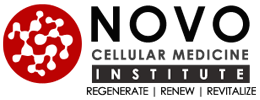STEM CELL IMPLANTATION
Intrathecal Implantation:
Intrathecal administration of stem cells is one of the most viable ways to make the stem cell reach the site of a CNS lesion. Studies have shown that direct application of stem cells is the best way to deal organ specific lesion and therefore provide most safe enroute of stem cells in CNS diseases, which are otherwise difficult to reach.
Lumbar puncture is performed by an experienced anaesthesiologist through L3-L4 junction under local anaesthesia in sterile conditions, and would take approximately ½ hour to conduct the procedure. The spinal cord ends at L1, therefore accessing intrathecal space at L3-L4 is free from any injury to spinal cord.
Intravenous Implantation:
Intravenous route is the safest route for stem cell administration in which stem cells are administered through peripheral venous system to different organs. The rate at which the cell will be infused into the patient will be calibrated in accordance to the dose used, which will reduce complication related to infusion treatments. All diseases of blood and systemic autoimmune disease, lung diseases and cardiac diseases are best approached through venous blood. IV administration usually takes about 20-30 minutes. Intravenous routes could be approached from as simple as peripheral vein to jugular veins through trans femoral route to vena cava through central catheterization.
Organ specific Intra-Arterial Implantation:
This route will be applied for all diseases specific to deep organs of the body such as pancreas in diabetes or kidney in case of kidney diseases or brain in case of Parkinsonism or neurological disorders. There is enough evidence to show that direct super selective implantation of the stem cells into the organ is most effective therapeutic approach in stem cell treatments. This procedure will be conducted by an experienced interventional radiologist and will provide super selective stem cell therapeutic injection. Systemically injected stem cells undergo intra-pulmonary cell, liver and spleen trapping, and therefore only a limited amount of cells might home to the affected targeted region. The internal arteries for different organs will be reached by trans-femoral route through a catheter under local anaesthesia, which is very similar to cardiac angiographic procedure, to implant stem cells through the arteries (gastro duodenal, renal or basilar and vertebral arteries) that feed the organ regions (Pancreas, Kidney or Brain respectively) affected by the disease (Diabetes, CRF or Parkinsonism respectively) to release in situ the highest concentration of stem cells.
Bronchoscopic Implantation:
Stem cell implantation for the airways in chronic inflammatory diseases of the lungs, particularly when lesions are in the airways will also be conducted through bronchoscopic procedure. Bronchoscopy entails insinuating flexible tube called a bronchoscope through the nasal route (or sometimes your mouth), down to throat and into the airways and gone as distal to inject the stem cells particularly reach the airways. There is a light and small camera that allows evaluation of the windpipe and airways. The procedure will be conducted in proper local anaesthesia and by an expert bronchoscopist.
Super Selective Intravenous Implantation:
Chronic Cerebral-Spinal Venous Insufficiencies or CCSVI is a condition where the veins have reduced ability to drain impure blood in a sufficient way from the central nerve system and the spinal cord. The primary pathology is by extra cranial stenosis particularly in internal jugular veins and the azygos veins. CCSVI can in general be divided in two forms; the first form is the intrinsic narrowing of the vein itself. Paolo Zamboni, as a hypothesis, first described the presence of CCSVI in Multiple Sclerosis patients. The second form is caused by sclerotic and fibrous valves in the veins. These narrowed veins can be balloon dilated via veno-angioplasty.
The path approached is trans femoral vein route. This procedure is performed under local anaesthesia by a highly trained endovascular surgeon or interventional radiologist who with his highly experienced and trained staff manoeuvres the catheter to both right and left internal Jugular veins and azygos veins, and images the stenosis with Venogram with contrast. In case of presence of stenosis or defective valve, the veins are balloon dilated with pressure adequately judged by the surgeon/radiologist.
Interestingly evidence has shown that post dilatation there is enhanced re-stenosis with time. Most of restenosis also involves fibrous scar formation, which may harbinger permanent narrowing. We hypothesize that every dilatation procedure imposes certain level of inflammatory stress to the walls of the vein, which also damages endothelial layers of the blood vessel, which then heals with sequel of fibrosis. We believe that injecting stem cell to the site of balloon dilatation has potential to subside the inflammation as stem cells are regarded as anti-inflammatory agents, which may then reduce fibrotic stricture formation and can prevent restenosis.
